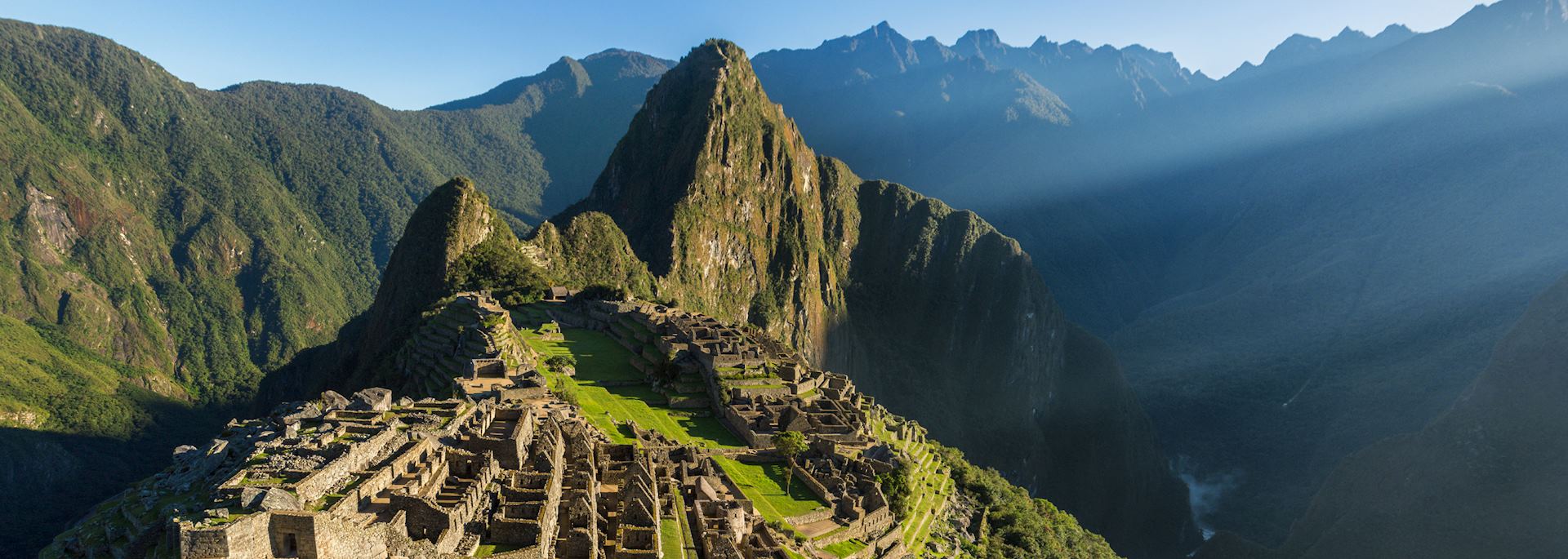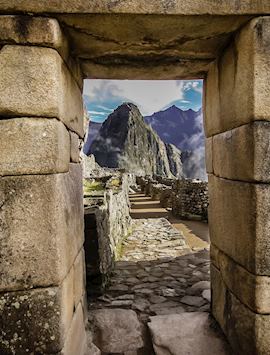By Peru specialist Nik
Just shy of 600 years ago, a small plateau between two lushly forested peaks high in the Andes became a building site for the Inca Empire’s greatest city.
This citadel in the clouds was abandoned only 100 years later but Spanish invaders never found Machu Picchu. It was left to nature before explorer Hiram Bingham caught wind of it on an expedition in 1911 and decided to investigate. A hidden city protected by the mountains, and still wonderfully inaccessible other than by foot or train, Machu Picchu is now a New Seven Wonders of the World.
My Machu Picchu highlights
I’m often asked if Machu Picchu really lives up to its name. The emphatic answer is yes, and for two reasons.
Firstly, its buildings — the temples, palaces and houses — are in a remarkable preserved state. The Spanish never ventured up the mountains and so left it untouched.
Moreover, each time I visit Machu Picchu I’m bowled over by the setting. Out of view from the valley, you hear the roar and churn of the Urubamba River 500 m below. A protective wall of mountains surrounds you, which fades in and out of view as the mist falls and lifts. You have the distinct feeling of being high up in the world and part of a very well-kept secret.
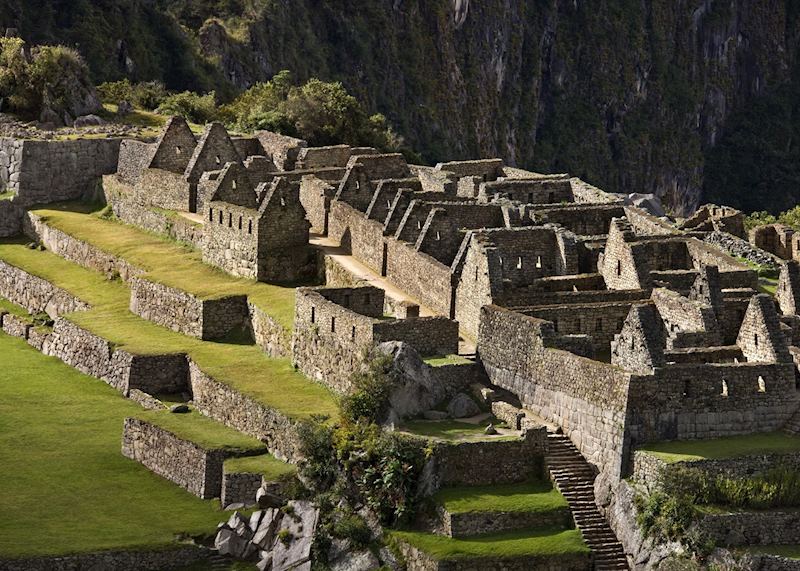
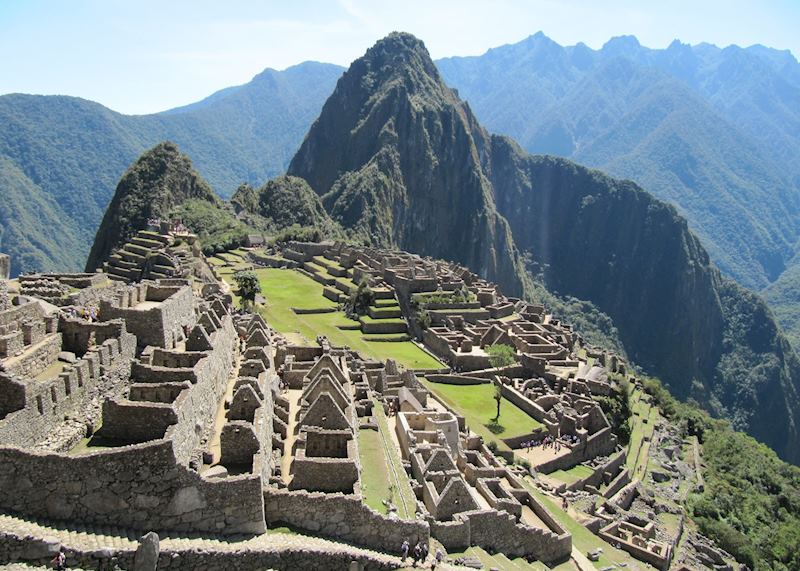
Three of my stand-out highlights
The Intihuatana stone
This carved pillar on a square stone base remains a testament to the Incas’ knowledge and skill as astronomers. The name translates to the 'hitching post of the sun'. The corners point to the four cardinal points, and the stone still accurately indicates the positioning of the sun. If you happen to be watching at noon on either equinox, you’ll notice the stone’s shadow disappear for just a moment, as designed by its creators.
The Royal Tomb
This cave-like building is thought to be where sacrificial or burial rituals were performed, and there have been more than 100 skeletons excavated here. Just to the left of the tomb lies a series of ceremonial baths fed by a sophisticated aqueduct system — another reminder of the impressive masonry skill of the Incas.
Climb Huayna Picchu
You can climb Huayna Picchu, the witch’s hat of a mountain that stands guard behind Machu Picchu, as long as you book it well in advance as part of your admission ticket. Your ticket will show your allocated time slot to start the walk, and it takes about an hour to reach the top.
I wouldn’t recommend it if you don’t like heights — the last stretch of path narrows with no barrier to separate you from the edge. The reward comes from the view at the top, which our guides generally agree is the best place to see Machu Picchu from above. You could opt to climb part of the way to still get the knock-out view, albeit from a lower level.
Video: Our expert tips for visiting Machu Picchu

Machu Picchu: a first timer's guide
A first timer's guide to Machu Picchu.
Where to stay in Machu Picchu
I’d highly recommend an overnight stay at Machu Picchu or Aguas Calientes if you want to get up to experience the ruins early the next morning.
The Machu Picchu Sanctuary Lodge is the only hotel close to the entrance of Machu Picchu, a mere stroll away. Staying here ensures you’re best placed to avoid traveling time at the start and the end of the day, though this convenience comes at a considerable price tag.
Aguas Calientes has a good range of hotels. The buses start to roll out of town up to Machu Picchu early enough for you to arrive just after the gates open, and well ahead of visitors coming by train. Staying locally also is helpful if you want to visit the site more than once. Mist clinging to the peaks can be completely bewitching, but visibility can be changeable 2,450 m above sea level. A second visit can give you a completely different set of conditions to enjoy as you explore the architecture, and time to climb Huayna Picchu.

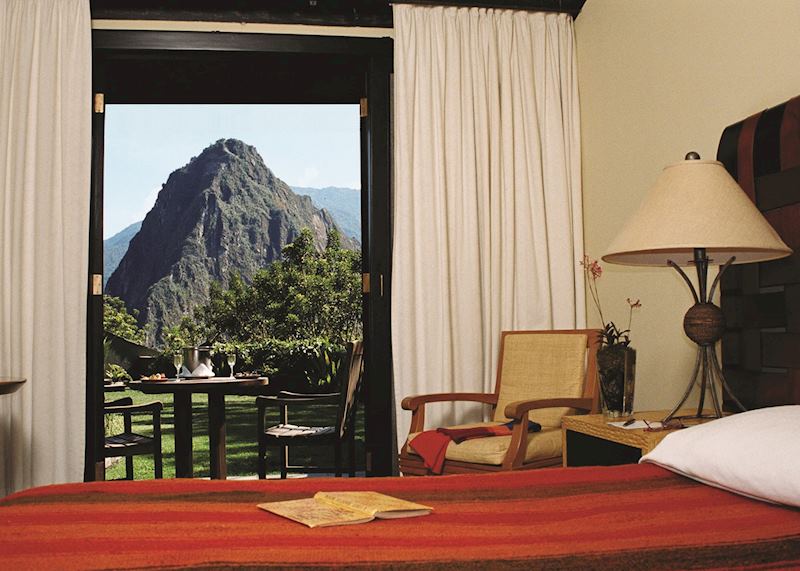
How to get to Machu Picchu
Your most common route to Machu Picchu is flying into Peru’s capital city, Lima, before transferring to an internal 1h 15m flight to Cuzco.
Cuzco sits at the base of the Andes in the southeast of Peru. It was the capital of the Incas and is the leaping-off point for Machu Picchu and the Sacred Valley, the one-time heartland of the Inca Empire. You can reach Machu Picchu from Cuzco on the train or by trekking.
A small town, Aguas Calientes, has sprung up in the valley below Machu Picchu. It serves as the disembarking point for the train or a gathering place after you’ve completed the Inca Trail and descended from Machu Picchu.
From as early as 5am buses leave here to travel up the windy road cut into the mountainside to the entry gates of Machu Picchu.
When is the best time of day to visit?
Machu Picchu is often busiest between 11am and 3pm when most train and bus visitors arrive, so the opportunity to see the site in the morning or at dusk could allow you to have a more meditative experience and better light for photography.
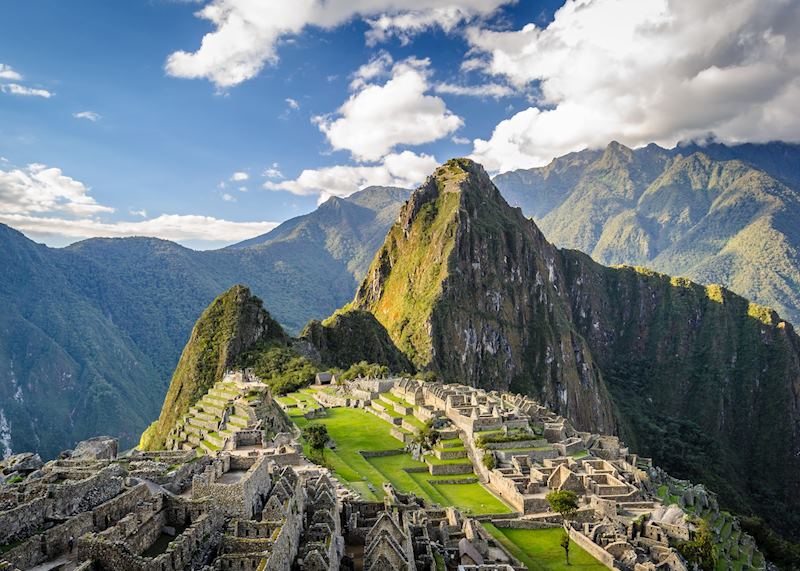

Machu Picchu by rail
The train journey from Cuzco to Aguas Calientes offers you the chance to see dramatic, natural scenery as you make your way through lush valleys and past rugged peaks, following the course of the Urubamba River.
There’s a variety of rail services, from regular carriages with comfortable seating, Vistadome services with panoramic windows through to the luxury Hiram Bingham train with fine dining and entertainment.
You can break up your journey mid-point by stopping or staying overnight at Ollantaytambo in the Sacred Valley, once an important administrative center for the Incas. The remnants of a sturdy fortress, complete with terraces, dominates the town. You would travel into the valley by road and then take the train from Ollantaytambo to Machu Picchu.
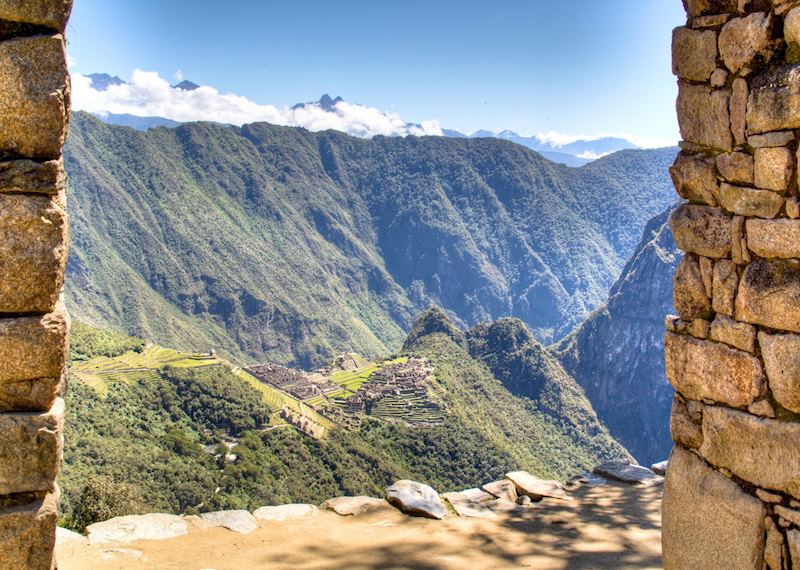
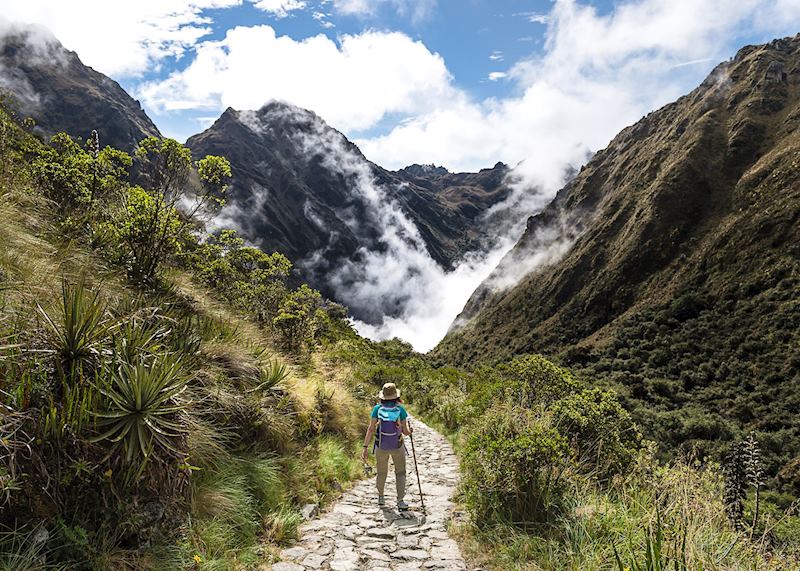
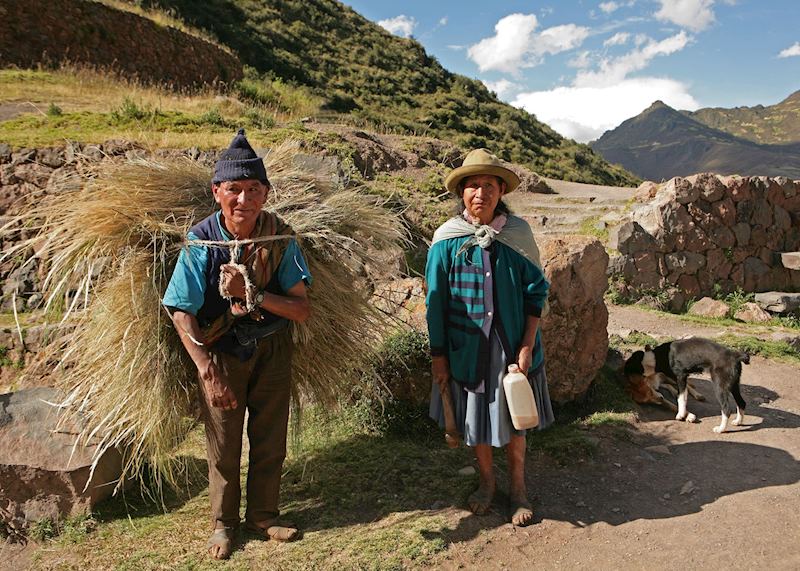
Machu Picchu by foot
Trekking vacations to Machu Picchu are ideal if you want to immerse yourself fully in the hugely varied landscape of snow-capped mountains, sapphire lakes, terraced fields and emerald-forested slopes.
Our guide on trekking vacations in Peru introduces a range of routes and distances so you can find a trip that’s tailored to your fitness level, the number of days you have available to explore and your preferred accommodation.
With group and private treks ranging from 1 to 12 days, you can cover the Inca Trail, Salkantay (known as the ‘alternative Inca Trail') or the Mountain Lodges of Peru route at a pace that suits you once you’ve had time to acclimatize to the altitude.
There are regulations restricting the number of walkers allowed on the Inca Trail. Only 500 people are allowed to start the Inca Trail trek to Machu Picchu each day, and this includes the porters. Permits sell out notoriously far in advance, so it’s essential to plan your trip as early as possible if you want to walk the Inca Trail.
A little note on altitude
Machu Picchu stands at around 2,450 m above sea level, and Cuzco at 3,400 m. At these heights, there’s 20 per cent less oxygen in the air. In the vast majority of cases, symptoms of altitude sickness are very mild (a little sleepiness or a slight fuggy head) and wear off after a day or two, but it can make doing anything energetic feel like a struggle.
Our Peru specialists can give you personalized recommendations about how to acclimatize ahead of your trek and combat any altitude sickness during it.
Travel insurance for Machu Picchu treks
It’s important to check whether your travel insurance will cover you for treks at altitude, especially if you’ve previously bought a policy to cover you for a number of trips throughout the year. It’s possible to buy specialist trekking travel insurance, and this tends to fall into pricing categories based on the altitude and length of the trek you wish to take on.
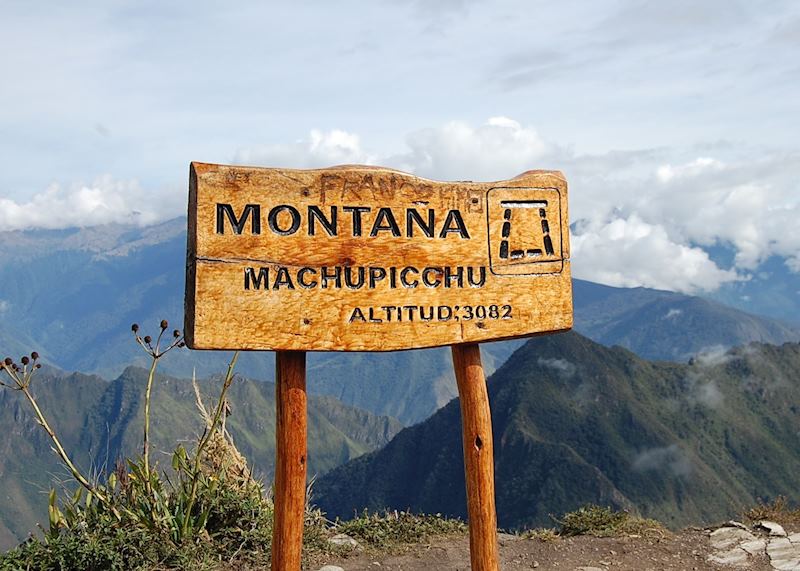
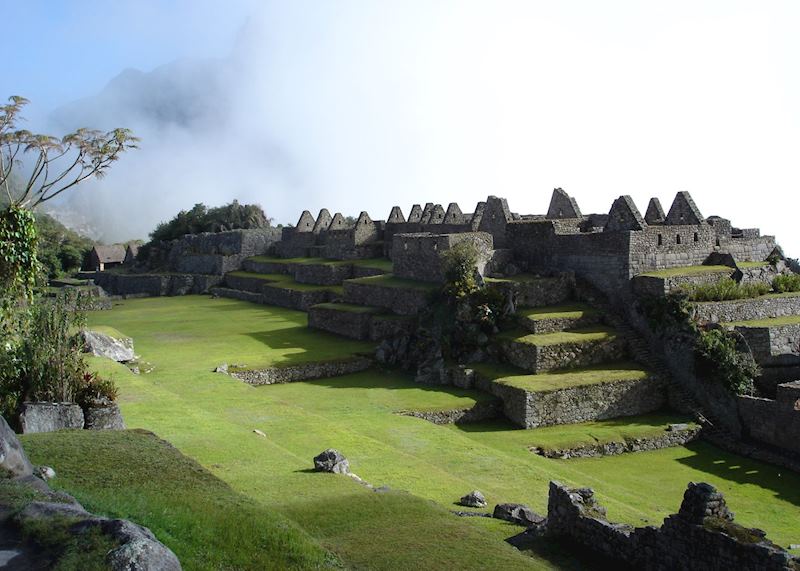
Where to eat at Machu Picchu
Aguas Calientes has a plentiful selection of restaurants to suit your tastes and wallet. One of our current favorites is Indio Feliz, an award-winning restaurant serving Peruvian dishes with a French twist tucked away in a side street.
You can also try Peruvian street food if you time it right. Every Sunday, slow cooked chicharrones (hog roast) is sold until it’s all gone. I tried it on a recent trip and the meat was amazingly succulent, with the best crackling I’ve ever tasted.
The best time to visit Machu Picchu
July and August is peak season, when the highest number of visitors are taking on the Inca Trail or wandering around Machu Picchu.
The Andean foothills are at their driest at this time of year too, with the rainy season taking place between November and March.
We favor visiting throughout the dry months of April to October, but it’s worth avoiding the July and August peak period if you’re not tied to traveling at this time.
It should be noted that the Inca Trail is closed to walkers during the month of February so restoration work can take place.
Trips to Machu Picchu
We’ve created a selection of itineraries that visit Machu Picchu as well as some of Peru's other highlights.
I’d suggest you need at least 9 days in Peru to take in Machu Picchu and the surrounding Incan ruins, with time to explore Cuzco before or after.
With a little extra traveling time you can extend your journey to cover time in the Peruvian Amazon, Lake Titicaca or the Colca Valley.
Tailor-make your trip to Peru
Start thinking about your experience. These itineraries are simply suggestions for how you could enjoy some of the same experiences as our specialists. They're just for inspiration, because your trip will be created around your particular tastes.
View All Tours in Peru